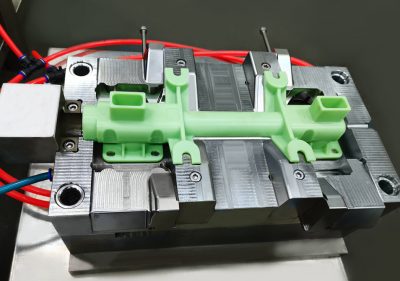Understanding Tooling Costs When Creating Parts using Investment Casting
Investment casting methods use wax patterns dipped in ceramic slurry to create molds that will form the metal parts for customers. To make the wax patterns, the manufacturer has to design and manufacture tooling.
Since customers are getting custom-made parts from the manufacturer, the tooling is created for each specific project. The tooling design and manufacturing occurs before all other investment casting process steps. Some manufacturers will build all their tooling in-house, while others will contract other companies to perform the tooling.

When it comes to tooling, most costs are quoted at the beginning of the project. These are one-time expenses, as the tooling becomes the property of the customer. Costs vary greatly for tooling, as one project may cost higher than another project for a single customer. Here is what to understand when looking at tooling costs when creating investment casted parts.
Tooling Cost Factors
Part Size
The size of the part controls tooling costs. Larger parts need large tools to handle them. This factor leads to a manufacturer needing more materials to make the tooling. A larger part size also directly influences the amount of time it will take to machine mold cavity in the tooling.
Part Volume
The volume of the part impacts tooling costs. Higher volume parts need multi-cavity tooling to improve throughput. Multi-cavity tooling requires complex tooling design and more materials to make. The number of cavities in the tooling also directly influences the amount of time it will take to machine the tooling and to validate the tooling once it is completed.
Wax Cores
Parts that have intricate internal pieces may need cores made that will go into the wax patterns for the molds’ creation. These cores require separate tooling. Tooling costs may rise depending on the intricacy of the core’s design.
Casting Complexity
Casting complexity involves how simple or complex the part is. Parts with complex geometries require tools that have many moving parts. As more mechanisms are added to the tools, the price of the tooling also increases.
Tool Wear
In some instances for long production runs of high volume parts, tooling begins to wear out during the wax pattern manufacturing process. Tooling costs are factored based on the type of material used to make the tool and the part’s material that becomes machined and cut. This circumstance typically occurs when cutting extremely hard materials. Most of the wearing for tooling occurs where moving parts encounter each other as they cause friction and abrasion. When tooling needs repairs, it is done quickly without significantly impacting production times.
Figuring Out Tooling Costs for Budgets
Keep in mind that there is no master list when it comes to tooling costs due to the varying nature of each customer’s project. Some tooling costs could be as low as $1,000 while other projects could go over $20,000. Working closely with the engineering team allows you to further understand the tooling design and manufacturing process. Then you can create the part manufacturing budget that is viable for your company.